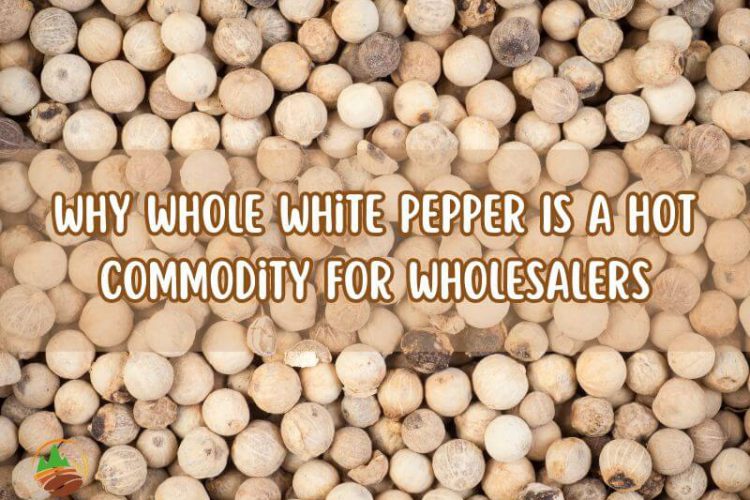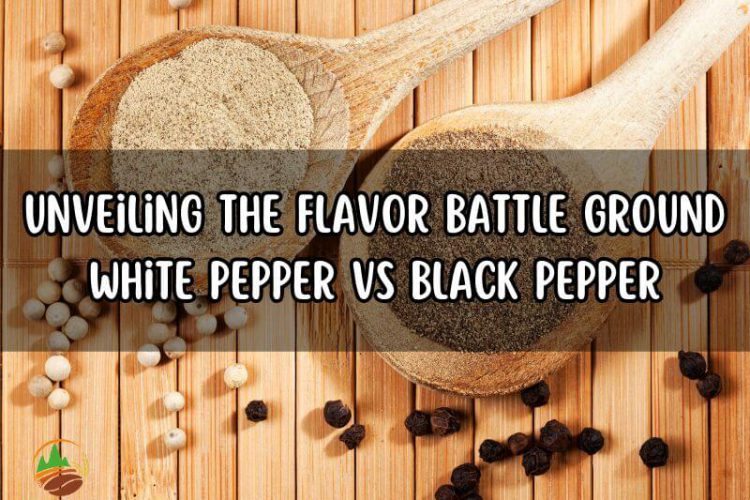Chinese Cinnamon vs Cinnamon are both aromatic spices with a rich history and a myriad of uses. However, what sets them apart? In this comprehensive comparison, we unravel the distinctive features, flavors, and applications of these two spices.
Table of contents
- 1. 1. Questions about the difference between Chinese cinnamon vs cinnamon
- 2. 2. Answers for questions about the difference between Chinese cinnamon vs cinnamon
- 2.1. 2.1. Chinese cinnamon vs cinnamon in terms of color, flavor and aroma
- 2.2. 2.2. Chinese cinnamon vs cinnamon in terms of oil content, coumarin content
- 2.3. 2.3. Chinese cinnamon vs cinnamon in terms of growing area
- 2.4. 2.4. Chinese cinnamon vs cinnamon in terms of health benefits
- 2.5. 2.5. Chinese cinnamon vs cinnamon in terms of price
1. Questions about the difference between Chinese cinnamon vs cinnamon
Here are some frequently asked questions about the difference between Chinese cinnamon vs cinnamon:
- Chinese cinnamon vs cinnamon in terms of color, flavor and aroma
- Chinese cinnamon and cinnamon in terms of oil content, coumarin content
- Chinese cinnamon vs cinnamon in terms of growing area
- Chinese cinnamon and cinnamon in terms of health benefits
- Chinese cinnamon vs cinnamon in terms of price
2. Answers for questions about the difference between Chinese cinnamon vs cinnamon
Below we will help you answer questions related to the comparison between Chinese cinnamon vs cinnamon.
2.1. Chinese cinnamon vs cinnamon in terms of color, flavor and aroma
Understanding the differences between Chinese cinnamon and cinnamon can help you choose the spice that best suits your preferences and desired outcome in your recipes or applications.
| Chinese cinnamon | Cinnamon | |
| Color | darker reddish-brown | lighter brown color |
| Flavor | strong, sweet, and bold | delicate and subtle |
| Aroma | robust and intense | lighter and more fragrant |
- When it comes to appearance, China cinnamon typically has a darker reddish-brown color compared to cinnamon. Its color can range from reddish-brown to a deep mahogany hue. Cinnamon, particularly Ceylon cinnamon, has a lighter brown color. It tends to have a tan or golden-brown shade.
- In terms of flavor, Chinese cinnamon is known for its strong, sweet, and bold flavor profile. It has a pronounced spicy and pungent taste with a hint of sweetness. Cinnamon, particularly Ceylon cinnamon, has a more delicate and subtle flavor. It is slightly sweeter and has a milder spiciness compared to Chinese cinnamon.
- About aroma, Chinese cinnamon has a robust and intense aroma. It is characterized by a strong, warm, and spicy fragrance with hints of sweetness and earthiness. Ceylon cinnamon has a lighter and more fragrant aroma. It exudes a sweet, woody, and slightly floral scent that is less overpowering compared to Chinese cinnamon.
It’s important to note that personal preferences for flavor and aroma can vary, and both Chinese cinnamon and cinnamon offer unique qualities that can enhance various culinary creations or wellness routines.
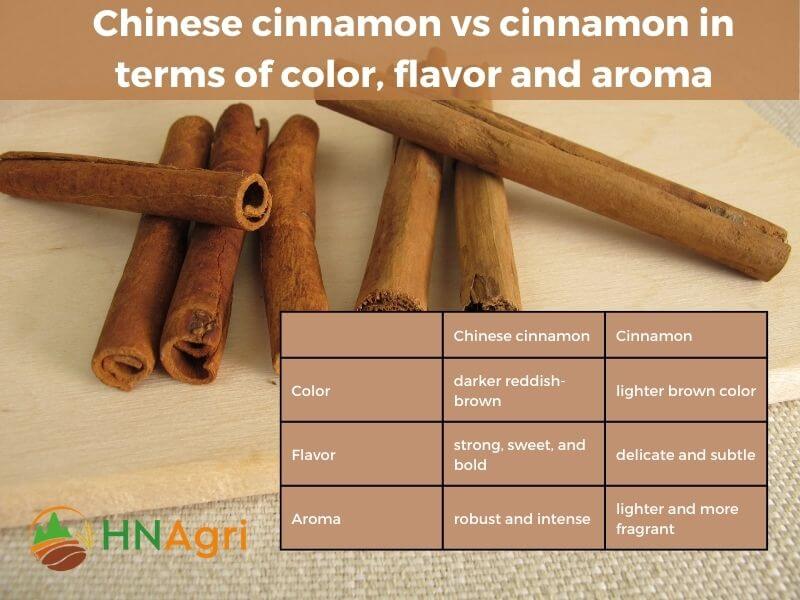
2.2. Chinese cinnamon vs cinnamon in terms of oil content, coumarin content
The difference between Chinese cinnamon and cinnamon in terms of oil content and coumarin content is very obvious, and is shown in the following section.
| Chinese cinnamon | Cinnamon | |
| Oil content | 1-4% | 0.5-2.5% |
| Coumarin content | 0.5-2% | 0.02-0.4% |
- Chinese cinnamon generally has a higher oil content compared to cinnamon. It contains a higher concentration of essential oils, which contribute to its strong flavor and aroma. True ceylon cinnamon has a relatively lower oil content compared to Chinese cinnamon.
- Chinese cinnamon contains a higher level of coumarin, a natural compound found in many plants. Coumarin has been associated with potential health concerns when consumed in large amounts. Ceylon cinnamon has a significantly lower coumarin content and is often considered a safer choice for individuals who are concerned about coumarin intake.
It’s important to note that excessive consumption of coumarin has been linked to liver toxicity and other health issues. Therefore, if you regularly consume cinnamon in large amounts or take it as a supplement, it’s advisable to opt for Ceylon cinnamon, which has lower coumarin levels.
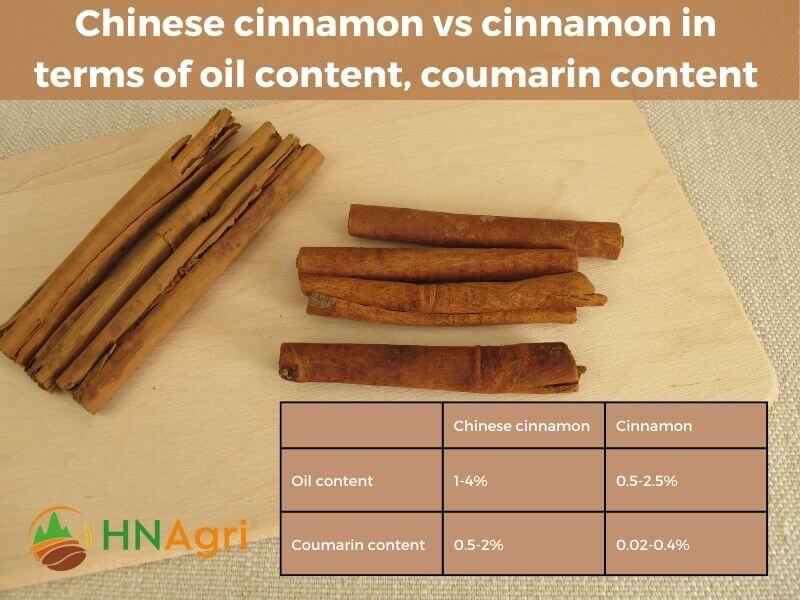
2.3. Chinese cinnamon vs cinnamon in terms of growing area
The primary growing areas for Chinese cinnamon are in southern China, particularly in regions such as Guangdong, Guangxi, and Yunnan. Chinese cinnamon has a long history of cultivation and usage in Chinese cuisine and traditional medicine.
Cinnamon, especially Ceylon cinnamon, is primarily grown in Sri Lanka (formerly known as Ceylon, or usually called Cinnamon Sri Lanka), hence its name. Sri Lanka is renowned for producing high-quality cinnamon due to its favorable climate and soil conditions.
While Chinese cinnamon and cinnamon have different growing areas, they are both widely available internationally, allowing people around the world to enjoy their distinct flavors and aromas. The geographical differences in growing areas contribute to variations in taste, aroma, and overall characteristics of the two spices.
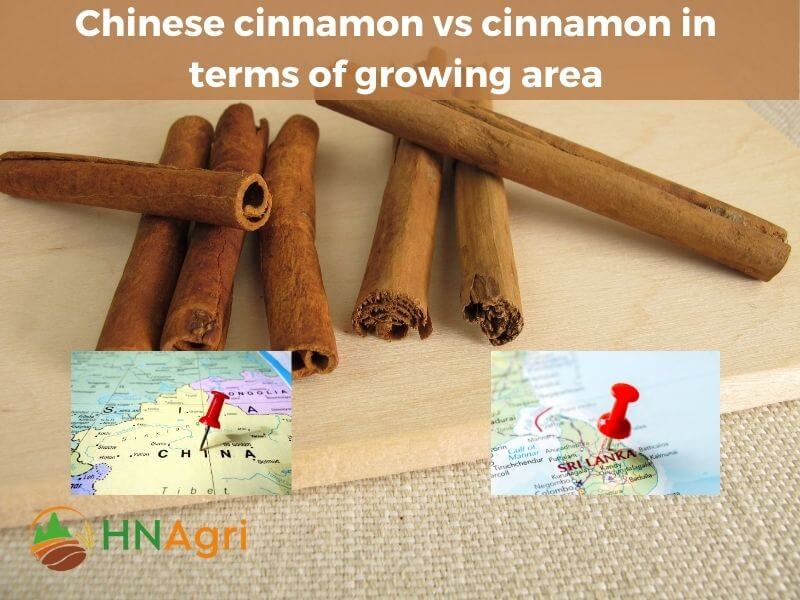
2.4. Chinese cinnamon vs cinnamon in terms of health benefits
Chinese cinnamon and cinnamon offer similar health benefits due to their shared chemical compounds. However, there are some differences worth noting:
Both types of cinnamon are rich in antioxidants that help fight oxidative stress and inflammation in the body. Both Chinese cinnamon and cinnamon have been studied for their potential to help regulate blood sugar levels.
However, research suggests that Ceylon cinnamon has a positive impact on heart health. Chinese cinnamon may negatively impact the heart and liver if it is used too much.

2.5. Chinese cinnamon vs cinnamon in terms of price
Below is common price in the market of Chinese cinnamon and Cinnamon:
| Chinese cinnamon | Cinnamon | |
| Prices | $1500 – $4000/ton | $9000 – $15000/ton |
Chinese cinnamon is generally more affordable and widely available compared to cinnamon. It is often the more budget-friendly option, making it a popular choice for commercial food products and everyday culinary use.
Price of ceylon cinnamon in Sri Lanka is generally priced higher compared to Chinese cinnamon. This is partly due to factors such as limited availability, higher production costs, and its reputation as a premium variety of cinnamon.
The price difference between Chinese cinnamon and cinnamon can vary depending on factors such as the region, quality, and market demand. Therefore, it’s always a good idea to check with local suppliers or retailers for the most up-to-date pricing information.



